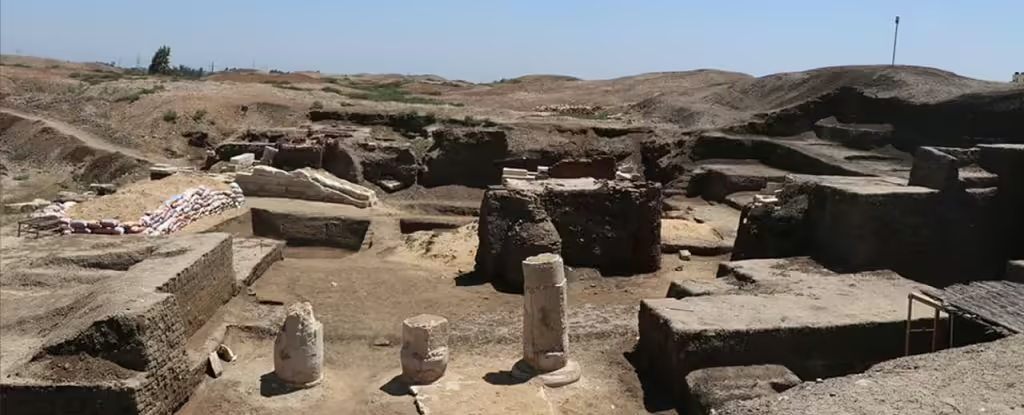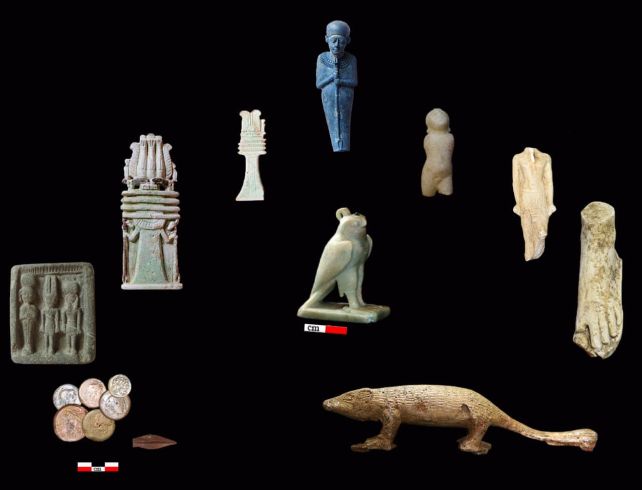Astronomical observatory found in ancient Egypt
- August 26, 2024
- 0
A ruined building in Kafr el-Sheikh was once where ancient Egyptians looked at the stars. Over 2,500 years ago, the building was the largest known astronomical observatory in
A ruined building in Kafr el-Sheikh was once where ancient Egyptians looked at the stars. Over 2,500 years ago, the building was the largest known astronomical observatory in

A ruined building in Kafr el-Sheikh was once where ancient Egyptians looked at the stars. Over 2,500 years ago, the building was the largest known astronomical observatory in Egypt in the 6th century BC and was part of what we today call the Temple of the Pharaohs in the city of Buto.
There, the first astronomers diligently tracked the movement of the sun and stars, which were vital to the lives of the ancient Egyptians.
The Egyptians were among the most gifted astronomers in ancient history, and their legacy continues to this day. The 365-day calendar and 24-hour day were born in Ancient Egypt. They completely mapped the night sky and had their own constellations and zodiac signs, some of which are still known today.
A recently opened observatory demonstrates these feats, despite little evidence of them having survived the ravages of time. The building itself, built of adobe bricks, covered an area of 850 square metres (9,150 sq ft) in an L-shaped structure supported by columns, with an entrance facing east towards sunrise.
Archaeologists from the Egyptian Ministry of Tourism and Antiquities found artifacts and tools related to the study of the sky here.
Of particular note is the large tilted shadow clock designed by the ancient Egyptians to keep track of time. These clocks were a type of sundial that used the movement of the shadow as the Sun moved across the sky to track the time of day from dawn to dusk.
This particular clock was made up of a series of 4.8-metre (15.7 ft) long limestone slabs on which were placed five flat blocks of limestone, three vertical and two horizontal. Despite their age, these blocks were once inscribed with lines to follow the changing inclination of the shadow cast on them as the sun moved.
A large stone block was also found in the round room, along with two other round stone blocks, one to the north and one to the west. This was also used to track the declination of the Sun.
A series of five small rooms were probably used to store observatory instruments, while four smaller mud-brick rooms and a stone room appear to have served as an observation tower. A large hall was also discovered, with three walls covered in yellow mortar on which frescoes were painted.
Among them was a ritual boat with eight niches and two oars at the back. On the front of the boat, archaeologists painted the head of Horus and the Eye of Ujat, symbols associated not only with the universe and space, but also with the god Horus and the goddess Wajet, the most important deities of Butoh.
In the middle of this hall is a stone platform with inscriptions on it, mostly depicting astronomical sunrise and sunset views during the three seasons observed in ancient Egypt.

Artifacts at the observatory included bronze statues of Osiris and Nemes, a terracotta statue of the god Bes, and a granite statue dating to the 26th Dynasty during the reign of Pharaoh Wahibre Psamtik I. This statue depicts Osiris and bears an inscription of the priest Psamtik-Seneb, which includes the title of royal printer.
Other artifacts include measuring instruments, a faience menat necklace, a faience statuette of a bird god, faience religious symbols, pottery artifacts, mortar amphora lids, and votive tables.
Astronomy was very important to the ancient Egyptians. They used their elaborate calendar to mark the passage of time and to determine the dates of religious and political rituals such as festivals and coronations. It was also important for monitoring the annual flooding of the Nile, agriculture, and navigation.
Today we take the calendar for granted; it is part of our way of life around the world.
However, we owe this at least in part to the hard work and ingenuity of ancient Egyptian astronomers and their sound engineering that allowed temples like this to still stand, and we can study their work even thousands of years after their lives have vanished into the sand.
Source: Port Altele
As an experienced journalist and author, Mary has been reporting on the latest news and trends for over 5 years. With a passion for uncovering the stories behind the headlines, Mary has earned a reputation as a trusted voice in the world of journalism. Her writing style is insightful, engaging and thought-provoking, as she takes a deep dive into the most pressing issues of our time.